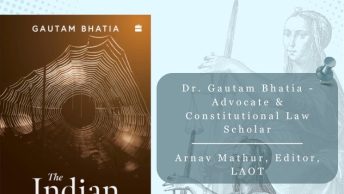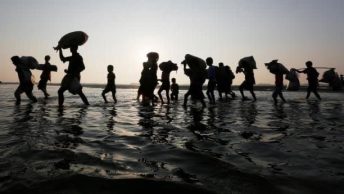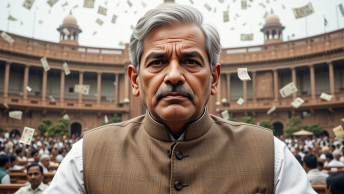Today’s Hindustan Times has a column by the sociologist Gail Omvedt who argues that the recent stay order on OBC quotas and the government’s response to it, point to the need for a caste-based census in India. In her piece, she uses the example of race-based census surveys in the U.S. to argue that they need not necessarily produce social divisiveness. In the course of making her case, she also provides interesting insights on educational testing in India:
“Recognising the existence of race, like caste, is not the road to ruin, but is a necessary prerequisite for dealing with, and resolving, the issue. Those who argue for ‘merit’ ignore the fact that merit is not linked to caste. Here, biological inheritance and social conditioning have to be carefully differentiated. The reason that people of ‘higher’ caste origin perform better lies in their environmental advantages, which range from the fields of education, socialisation to economic well-being. … … …
In other words, IQ tests reflect a degree of environmental advantage and socialisation, even ‘learning’ about taking IQ tests. Even at an early age, this environmental difference is there. In many European countries, the average scores had risen because the scores of the lowest deciles rose faster: in other words, the spread of mass education had made a difference. In India, there has been no such extensive academic and general intellectual debate about test scores, heredity and environment; only a good deal of frantic and self-justifying outpourings. But the examinations here, as well as interviews, are much less objective, much more culture-bound than IQ tests. Education is much more unequally distributed. Denial of caste inequalities has been less reasonable, more ingrained, more emotional. In comparison with race, though, it is superficially easy to avoid dealing with caste: it is not so easily visible as race is, though both are equally social and not biological factors. There is a good deal of social interaction directed at understanding the other’s caste, but these are less obvious and visible. As a result, a superficial ‘passing’ is much easier, particularly for employment, if not for more personal issues such as marriage. Yet the scars of caste remain, of this there is no doubt. What is needed is more informed discussion and debate, not a closing of eyes, ears and mouths to mimic the monkey reaction to reality. There is possibly little change since the 1931 census, which gave extensive information about caste. However, there is need for investigation: have some OBCs really become ‘affluent’? Aside from a few of their members, this is doubtful. The very fact that these are mostly rural-based groups, and the rural economy is in recognised crisis, should indicate that the average has improved. There is no point, however, in endlessly arguing. We need the data. How does one handle a caste-based census? There has been, again, a lot of talk about the complications of the matter. The solution is simple: let everyone self-identify his or her caste. Those who want can say ‘no caste’ (in fact, this itself would be an important data from the census). Those who are out of mixed marriages or confused about their caste in anyway can also say this. A panel of experts at the State level can then make broad classifications out of the responses. There is, in other words, no great dilemma about how to do it. It only takes social will.”
This may also be a good time to recall the 1999 debate between Omvedt and others on the left which was occassioned as a result of Arundhati Roy’s involvement with the NBA. Though the debate seemed to be accompanied by a considerable degree of rancour, I for one found the content of the debate very instructive. Here is the open letter sent to Arundhati Roy by Gail Omvedt, and here is a link to the host of responses it elicited, including this from Ashish Kothari. This debate has continuing relevance for developmental issues in India.







Caste in India means different things in different contexts.The governments list(s) of caste and
what people perceive need not
(and I think will not) be the same.
Most people go to extent of identifying themselves with sub-caste/sub-groups although the
official nomenclature can be different. For example a person
can say that I am an Iyer and
refer to the sub-classification
within Iyers.Some castes have
many sub-castes/sub-groups,
perhaps too numerous to create
confusion.So where do we start
and stop.Should be collect data
only for Brahimns and end with
that or should we go to second
and third level classification
(e.g.Brahmin->iyer->vadama).
Many sub-castes may be identifying
themselves in terms of broader
classification for many reasons.
And how does one set the boundary
for that category ‘caste’. Is there an uniform description
for caste.There are Hindu Nadars,
Christian Nadars, Hindu Reddys,
Christian Reddys.I am told that
in Goa there are Christian Brahmins.So where does religion
and caste begin/end in such classifications and categories.
Mr. Srinivas, you point to very valid problems that will have to be overcome if Omvedt’s suggestion is to be acted upon, but I am unsure whether this by itself acts as an argument against undertaking a survey at all. It seems only logical that if the government is going to go about reserving seats on such a large scale, there should be data to back up its policy.
Even if one is opposed to quotas altogether, there may be independent value in having a good sense of the changing nature of caste patterns and stratification in Indian society. However much one would wish for erasing caste as a measure of social identity in India (and not everyone is agreed that that is a desirable objective, given that at least for some people caste identities are empowering), recent debates have shown that we are very far from that reality.
Because of the problems you highlight, actually conducting a survey rigorously will be a herculean task, and those tasked with conducting the survey should be provided with sufficient resources and expertise to be able to do their job well. At the very least, the surveyors will have to have the benefit of the expertise of sociologists and regional experts to assist and guide their work.